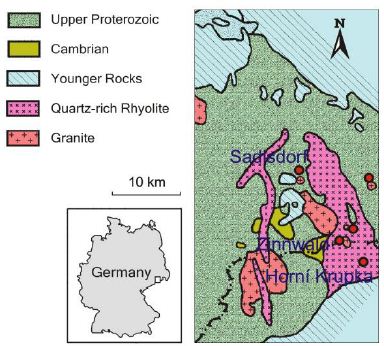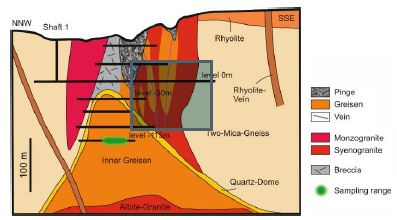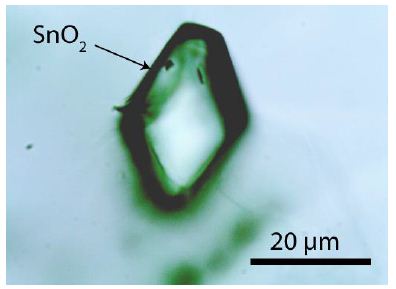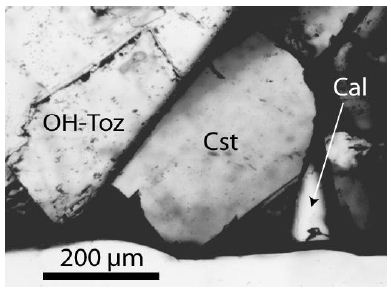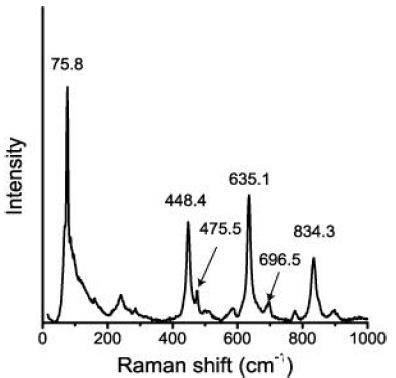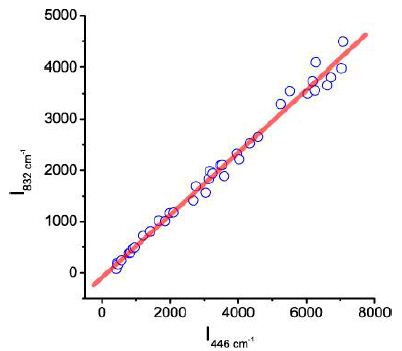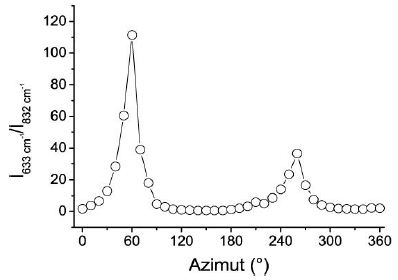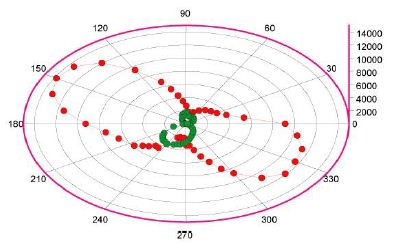Abstract
Introduction: Pregnancy gives joy and new feelings to the mothers but along with that, there are different issues and problems faced by the mothers in the antenatal period and postnatal period. These problems can put the mother in danger. Worldwide, approximately 830 women died every single day due to complications during pregnancy or childbirth (2015) [1]. It is very important for the mothers to have knowledge regarding antenatal and postnatal care after caesarean section. So, the present study was conducted to find the knowledge and practices regarding antenatal care and care of self and newborn after caesarean section.
Objective: The study was conducted with the objectives of “to assess the effectiveness of ‘Health Promotion Interventions’ for women undergoing elective caesarean in PGIMER, Chandigarh on knowledge and practices related to antenatal care.
Method: A quasi experimental study was done in OBG unit of Nehru hospital PGIMER, Chandigarh during the month of July-Aug 2019. Total 80 pregnant mothers admitted for elective caesarean section were enrolled as per inclusion criteria by using purposive sampling technique. Pregnant mothers were interviewed by using interview schedule to assess knowledge and practices. The tool was validated by experts of National Institute of Nursing College, Obstetrics and Gynecology Department and department of Physiotherapy PGIMER, Chandigarh. Each interview took 25-30 minutes to complete.
Results: The mean age of the subjects was 29.32 ± 4.4 years. Majority of subjects (37%) had placenta previa as the indication of elective caesarean. More than half of the mothers were aware about diet (53%) and importance of personal hygiene (100%) in antenatal period. Less than half of the mothers were had knowledge regarding other aspects of antenatal care like rest and sleep (45.8%), body mechanics (44.6%), less than half of the mothers were practicing antenatal exercises i.e. deep breathing exercises (12%), foot and ankle exercises (2.4%) and maintaining daily fetal movement count (25.3%). Majority of the mothers were knew about breastfeeding (initiation, duration, position) (65.1%), condom and oral pills as contraceptive methods (78.3% and 61.4% respectively) but less than half of the mothers were had knowledge about breastfeeding complications and their management (38.6%), warning signs of postpartum complications (19.3%), about lochia (38.6%), postnatal exercises (4.8%), benefits of early ambulation (13.3%), about another contraceptive methods and newborn care after caesarean section.
Conclusion: Hence, has been concluded that there was a need to plan a health intervention program or protocol aiming to improve the maternal health knowledge and practices which eventually improve the health status of the mothers as well as baby.
Keywords
Antenatal care, Self-care after caesarean section, Newborn care
Introduction
Pregnancy is the period of transition which would nearly disturbed the every aspect of a woman’s life. The postoperative course of a mother having a caesarean section is different for each mother. The issues related to the postpartum period can be managed by providing efficient, effective, quality nursing care to postnatal mothers and their neonates. Mothers have to face different problems during pregnancy, immediately after childbirth and in the postnatal period. During pregnancy the problems faced by the mothers are lower back pain, swelling of the lower legs, heartburn, breathing difficulties which are most common complaints amongst women during the antenatal period, have a great impact on their quality of life. Certain interventions like education on body mechanics for back pain, range of motion exercises for leg swelling, deep breathing exercises, and advising mother to lie in left lateral position and diet modifications including small and frequent meal can reduce these problems to some extent. If the mothers have knowledge regarding these problems and their interventions she will be able to deal with the problems early and can prevent arising of complications. Health knowledge is an important element to enable mothers to be aware about their health status and any abnormal signs which required further investigations. Only on the basis of knowledge assessment we are able to finds the gaps and interventions to fulfill these gaps in improving maternal and newborn health. So, this study was conducted to determine the level of knowledge and practices regarding antenatal care and knowledge regarding postnatal care and newborn care after caesarean section. This will be used as baseline data and will help the future planning of Health Intervention Program. Various literatures had proved that the knowledge gaps, cultural beliefs and behavioral pattern of which mothers had an impact on neonatal skin-care. Health education needs to change wrong practices [2]. The studies were also suggested that educations provided in antenatal period will results in better maternal and neonatal outcomes. The quality of the health care for mothers and newborns is supported with education; their health status will be affected positively in future [3] Education can be provided by using different methods like self-instructional module and information booklet. Similar findings were found in the another study that self- instructional module was effective in improving the knowledge of mothers on postoperative self-care after caesarean section [4].
Objective
To assess the eff ectiveness of ‘Health Promotion Interventions’ for women undergoing elective caesarean in PGIMER, Chandigarh on knowledge and practices related to antenatal care.
Material and Method
A quasi experimental study study was done in OBG unit including clean labor room, maternity ward, Gynae ward and CLR extension of Nehru hospital PGIMER, Chandigarh during the month of July-Aug 2019. Total 80 pregnant mothers were enrolled as per inclusion criteria i.e. pregnant mothers admitted for elective caesarean section with ≥ 32 weeks of gestation period and who were willing to participate. The women with known mental illness were excluded. Purposive sampling technique was used for data collection. Ethical clearance was obtained from the Institute Ethics Committee PGIMER, Chandigarh with reference number (NK/5167/MSc/10). Written permission was taken from the Head of the Department of Obstetrics and Gynaecology, PGIMER Chandigarh. Patient information sheet was given the pregnant mothers which contains all the information regarding the study. Informed Written Consent was obtained from the pregnant mothers enrolled in the study. Anonymity and confidentiality of the study subjects were maintained. The investigator was introduced her to the pregnant mothers and gradually moved to the interview by asking questions, data was also taken from hospital records. Pregnant mothers were interviewed by using interview schedule which included a) Socio-demographic profile b) Obstetrical profile c) Self-developed questionnaire included questions regarding knowledge and practices of pregnant mothers on antenatal care and care after caesarean section. The tool was validated by experts of National Institute of Nursing College, Obstetrics and Gynecology Department and department of Physiotherapy PGIMER, Each interview took 25-30 minutes to complete.
Results
Socio-Demographic Profile of the Subjects
As shown in Table 1 the mean age of the subjects was 29.32 ± 4.4 years. More than half of the mothers (60.2%) of the subjects were Hindu. Majority of the pregnant mothers and their spouse (54.2% and 62.7%) had education up to senior secondary and above level respectively. More than half of the pregnant mothers (85.5%) were homemaker and more than half of the spouse were doing private job. Most of the subjects (75.9%) were having joint family. The mean monthly per capita income of the subjects was 4795 ± 4913.2![]() .
.
Table 1: Socio-demographic profile of the subjects (n=80)
|
Variables |
f (%) |
| Age* (years) | |
| 20-25 |
13 (15.7) |
| 26-30 |
40 (48.2) |
| >30 |
27 (32.5) |
| Religion | |
|
Hindu |
50 (60.2) |
| Sikh |
25 (30.1) |
| Others |
5 (6.0) |
| Educational qualification of mother | |
| Primary |
13 (15.7) |
| Secondary |
22 (26.5) |
| Senior secondary and above |
45 (54.2) |
| Occupation status of mother | |
| Homemaker |
71 (85.5) |
| Working |
10 (12.0) |
| Educational qualification of spouse | |
| Primary |
7 (8.4) |
| Secondary |
21 (25.3) |
| Senior secondary and above |
52 (62.7) |
| Occupation status of spouse | |
| Private job |
69 (83.1) |
| Govt. job |
11 (13.3) |
| Family type | |
| Nuclear |
17 (20.5) |
| Joint |
63 (75.9) |
| Monthly per capita income ( |
|
| 7008 and above |
20 (24.1) |
| 3504-7007 |
21 (25.30) |
| 2102-3503 |
13 (15.7) |
| 1051-2101 |
14 (16.90) |
| Below 1050 |
12 (14.5) |
*Mean ± SD=29.32 ± 4.4
#Mean ± SD=4795 ± 7012.1
Obstetrical Profile of the Subjects
As shown in Table 2 that more than half of the subjects (67.5%) were multigravida and 28.9% and of subjects were primigravida. Majority of the subjects (79.5%) were having a period of gestation between 33 weeks to 37 weeks.
Table 2: Obstetrical Profile of the subjects admitted for elective caesarean (n =80)
|
Variables |
f (%) |
| Gravida | |
| Primi |
24 (28.9) |
| Multi |
56 (67.5) |
| Period of gestation (in weeks) | |
| 33-37 |
66 (79.5) |
| >38 |
14 (16.9) |
Pre-interventional comparison of knowledge regarding antenatal self-care among subjects shown in Table 3a, mean baseline knowledge about nutrition among subjects was 14.8 ± 1.39 and 3.7 ± 0.72) in the subjects of control and experimental group respectively (p=<0.01). Mean baseline knowledge about the rest and sleep of the mother in control and experimental groupwas 2.95 ± 1.71 and 3 ± 0.81 respectively (p=0.77). Mean baseline knowledge about body mechanics was 1.62 ± 0.49 and 1.45 ± 0.50 respectively (p=0.11). Mean baseline knowledge about preparation for elective caesarean was 1.80 ± 0.4 and 1.75 ± 0.43 respectively (p=<0.01). The total Mean baseline knowledge amongst subjects about antenatal self- care in control and experimental group was 15.6 ± 1.28 and 14.8 ± 1.39 respectively (p=0.06).
Table 3a: Pre-interventional comparison of knowledge regarding antenatal self care among subjects of Control group and Experimental group in antenatal period (n=80)
|
Knowledge domain (maximum attainable score) |
Control group (n1=40) Mean ± SD | Experimental group (n 2=40) Mean ± SD |
χ2/Fisher*/t value (df) p value |
| Nutrition (6) |
14.8 ± 1.39 |
3.7 ± 0.72 |
-3.59 (78) 0.001* |
| Rest and sleep (4) |
2.95 ± 1.71 |
3 ± 0.81 |
0.29 (78) 0.77 |
| Hygiene (10) |
5 ± 0 |
5 ± 0 |
— |
| Body mechanics (2) |
1.62 ± 0.49 |
1.45 ± 0.50 |
-1.57 (78) 0.11 |
| Pre-preparation for elective caesarean (2) |
1.80 ± 0.4 |
1.75 ± 0.43 |
-0.53 (78) 0.59 |
| Total (24) |
15.6 ± 1.28 |
14.8 ± 1.39 |
-2.8 (78) 0.06 |
*p value significant at <0.05
Pre-interventional comparison of antenatal care practices among subjects shown in Table 3b that deep breathing exercises were performed by only 20% and 5% subjects in the control and experimental group respectively. Majority of the subjects in the experimental group (55%) and in the control group (22.5%) performed walking after each meal. In the control group (32.5%) and in the experimental group (20%) of subjects were keeping a record of daily fetal movements count.
Table 3b: Pre-interventional comparison of antenatal care practices among subjects of Control group and Experimental group (n=80).
|
Variables |
Control group (n 1=40) f (%) | Experimental group (n2=40) f (%) |
χ2/Fisher$/value (df) p value |
| Antenatal Exercises Deep breathing exercises Foot and ankle exercises. Kegel exercises Walking 10-15 min after each meal |
8 (20) |
2 (5) 1 (2.5) 1 (2.5) 22 (55) |
1.11 (1) 0.09# |
| Daily fatal movements count chart |
13 (32.5) |
8 (20) |
1.61 (1) 0.20 |
#Yates correction
Post-interventions comparison of knowledge regarding antenatal self-care among subjects as shown in Table 4, Mean knowledge about rest and sleep of the mother in control and experimental group was 2.9 ± 1.01 and 2.2 ± 0.40 respectively (p=<0.01). Mean knowledge about body mechanics was 1.62 ± 0.45 and 1 ± 0 respectively (p=<0.05). Mean knowledge about preparation for elective caesarean was 1.72 ± 0.45 and 1 ± 0 respectively (p=<0.01). The total Mean knowledge amongst subjects about self-care in the antenatal period was 15.6 ± 1.43 and 12.1 ± 0.36 respectively (p=<0.001). Hence, post- interventional knowledge score of subjects regarding antenatal self- care in the experimental group was significantly higher as compared to the control group.
Table 4: Post-interventions comparison of knowledge regarding antenatal self care among subjects of Control group and Experimental group in antenatal period (n=80).
|
Variables |
Control group (n 1=40)
Means/ f (%) |
Experimental group (n 2=40) Mean ± SD/f (%) |
χ2/t value (df) p value |
| Nutrition (6) |
4.3 ± 0.82 |
3 ± 0 |
-10.11 (78) <0.001* |
| Rest and sleep (4) |
2.9 ± 1.01 |
2.2 ± 0.40 |
-4.35 (78) <0.001* |
| Hygiene (10) |
40 (100) |
40 (100) |
|
| Body mechanics (2) |
1.62 ± 0.45 |
1 ± 0 |
-9.0 (78) <0.001* |
| Pre-preparation for elective caesarean(2) |
1.72 ± 0.45 |
1 ± 0 |
-10.14 (78) <0.001* |
| Total (24) |
15.67 ± 1.43 |
12.1 ± 0.36 |
-15.02 (78) <0.001* |
*p value significant at <0.05.
Post-interventional comparison of antenatal care practices among subjects as shown in Table 5, that a significantly higher percentage of subjects in the experimental group was adherent to antenatal exercises, deep breathing exercises (100%), foot and ankle exercises (100%), walking after each meal (100%), Kegel exercises (97.5%) and daily fetal movement count (100%) whereas in the control group lower percentage of subjects were doing deep breathing (15%), foot and ankle exercises (2.5%), walking (42.5%), daily fetal movement count (32.5%) and no one had performed kegel exercises. Findings revealed that post-intervention almost 100% of the subjects in the experimental group performed antenatal exercises and maintained a daily fetal movement count chart as compared to the control group.
Table 5: Post-interventional comparison of antenatal care practices among subjects of Control group and Experimental group (n=80).
|
Variables |
Control group (n1=40) Mean ± SD/f (%) | Experimental group (n2=40) Mean ± SD/f (%) |
χ2/t value (df) p value |
| Antenatal Exercises Deep breathing exercises Foot and ankle exercises. Kegel exercises Walking 10-15 min after each meal. |
6 (15) |
40 (100) 40 (100) 39 (97.5) 40 (100) |
59.13 (1) 0.001* |
| Daily fatal movements count chart |
13 (32.5) |
40 (100) |
45.49 |
*p value significant at <0.05.
Discussion
Pregnancy is the one of the most important event in the life for all mothers. From the conception until postpartum it may be a critical time for the mother and baby. The postnatal period becomes much difficult when it is after caesarean section. At this time consistent care is required by the mother. Previous knowledge about post caesarean period plays an important role in the recovery and the mother is also motivated for breastfeeding and newborn care. The health care personals are obliged to educate the mothers in antenatal period. It is said that by educating a mother we educate a family, a community and whole nation. So, knowledge plays an important role in lowering the maternal and infant mortality and morbidity. The present study was conducted with the objective of assessment of assess knowledge and practices regarding antenatal care and knowledge regarding self-care and newborn care after caesarean section. The mean age of the subjects was 29.32 ± 4.4 years. In the present study pregnant mothers with ≥32 weeks of gestation admitted for elective caesarean section were selected. In the current study more than half of the subjects (67.5%) were multigravida and 28.9% and of subjects in were primigravida. Majority of the subjects (79.5%) were having a period of gestation between 33 weeks to 37 weeks. In the present study is has found that the majority of subjects (37%) had placenta previa as the indication of elective caesarean. In the present study it has been found that more than half of the pregnant mothers (53%) were had knowledge about nutrition to be taken in antenatal period. 45.8% of the pregnant were know about rest and sleep as an important aspect in antenatal period. 44.6% of the pregnant mothers had knowledge regarding body mechanics and only 21.7% of the pregnant mothers were aware of preparation for elective caesarean section. The present study was supported by study done by V Yashodha (2014). Study results showed that majority of mothers (82%) were had inadequate knowledge and 18% had moderately adequate knowledge, 54% had moderate and only 10 had adequate knowledge regarding antenatal care. The study concluded that by providing information guide sheet, knowledge can be improved [5]. The present study concluded that lower percentages of the mothers were practicing antenatal exercises i.e. only 12% of the mothers were performed deep breathing exercises. Majority of the subjects (48.2%) were performed walking after each meal. Only 2.4% of the pregnant mothers were performed foot and ankle exercises. These findings were consistent with the findings of Elamurugan Sujindra et al. who reported that knowledge and practices of antenatal exercises was less than average and a very few mothers were practicing exercises in pregnancy [6].
Current study found that more than half of the pregnant mothers (65.1%) had knowledge regarding breastfeeding (initiation of breastfeeding, correct positioning and burping and exclusive breastfeeding upto 6 months) but they don’t know the correct duration, position and attachment. A similar study done by Dr. Deepanjan Ray et al. concluded that benefits of breastfeeding was known to majority but correct duration, intervals, initiation were lacking [7]. Less than half of the pregnant mothers were having knowledge about breastfeeding complications and their management (breast engorgement, cracked and sore nipples) (38.6%), hunger signs of the newborn (32.5%) and about spoon and katori feed (28.9%) respectively. Majority of the pregnant mothers (49.4%) were known about incisional site care. Only 4.8% of the pregnant mothers were known about postnatal exercises and its benefits. The present study resulted that more than half of the mothers (81.9%) were had knowledge about maintenance of temperature of the newborn. Less than half of the mothers were have knowledge regarding normal weight of newborn (41%), changes in weight of the newborn with days of life (3.6%), umbilical cord care (27.7%), not to apply kajal (21.7%), sponge bath after 24 hours of the birth (27.55%), eye care ( inner canthus to outer canthus) (16.9%), skin care (32.5%), warning signs of newborn (33.7%) and immunization respectively (12%) . The present study was supported by similar study done by Ali BCT et.al. which was resulted that the awareness about postnatal care and breastfeeding was good among participants while lacking in a few aspects like vaccination. Hence, the study concluded that there is a need to educate the antenatal mothers about various aspects of vaccination and postnatal care [8]. More than half of the pregnant mothers were known about condom (78.3%,) and oral pills (61.4%) as contraceptive methods respectively. Less than half of the mothers were known about permanent methods (43.4%) and PPIUCD (33.7%). The study was supported by the similar study done by Radha Sangavi et. al. which was concluded that 78% of the subjects were aware about barrier method of contraception [9]. Hence, the study was concluded that pregnant mothers were having adequate knowledge about diet and importance of personal hygiene in antenatal period, about breastfeeding, about temperature maintenance in newborn. More than half of the mothers were known about condom and oral pills as methods of contraception. But less than half of the mothers had knowledge about antenatal exercises, about DFMC, post caesarean care, about alternative methods of contraception and about newborn care.
References
- International Journal of Community Medicine and Public Health Kaur A et al. Int J Community Med Public Health. 2018 Oct; 5.
- Srinivasa S, Bhavya G, Patel S, Harish S, Anjum SK (2018) Knowledge, attitude and practice of mothers in infantile skin care. Int J Contemp Pediatr 5: 536-541.
- Esin Çeber, Neriman Sogukpinar, Birsen Karaca Saydam, Rabia Ekti Genç Hafize Öztürk Can, et al. (2013) Mother and Newborn Home Care Education Program The Effects of “Mother and Newborn Home Care Education Program (MNHCEP)” on Mother and Persons Providing Care of Mother/Newborn.
- Rajan E, Nayak S (2014) Effectiveness of self instructional module on knowledge of post operative self care for mothers undergoing elective caesarean section in selected hospitals, Nitte Univ J Heal Sci 4: 39-41.
- YashodhaV, Hemavathy V (2020) The knowledge of primigravida mother regarding antenatal care in selected rural and urban areas. International Journal of Innovative Research in Science, Engineering and Technology 3.
- Sujindra E, Bupathy A, Suganya A, Praveena R (2015) Knowledge, attitude and practice of exercise during pregnancy among antenatal mothers. Int J Educ Psychol Res 1: 234-237. [crossref]
- Deepanjan Ray, Abdur Rahman, Aprajita Dasgupta (2015) A cross-sectional study to assess breastfeeding knowledge among antenatal mothers. IOSR journal of Dental and Medical Science 14.
- Ali BCT, Fysal N, Asha Saleema CV, et al. (2019) Study about the knowledge and attitude of anatnatal women on postnatal care and immunization. Int J Contemp Pediatr 6: 1003-1007.
- Sangavi R, Hantoor S (2018) Knowledge, attitude and practice of contraception among antenatal care Int. J Repord Contracept Obstet Gynecol 7: 3065- 3068.
